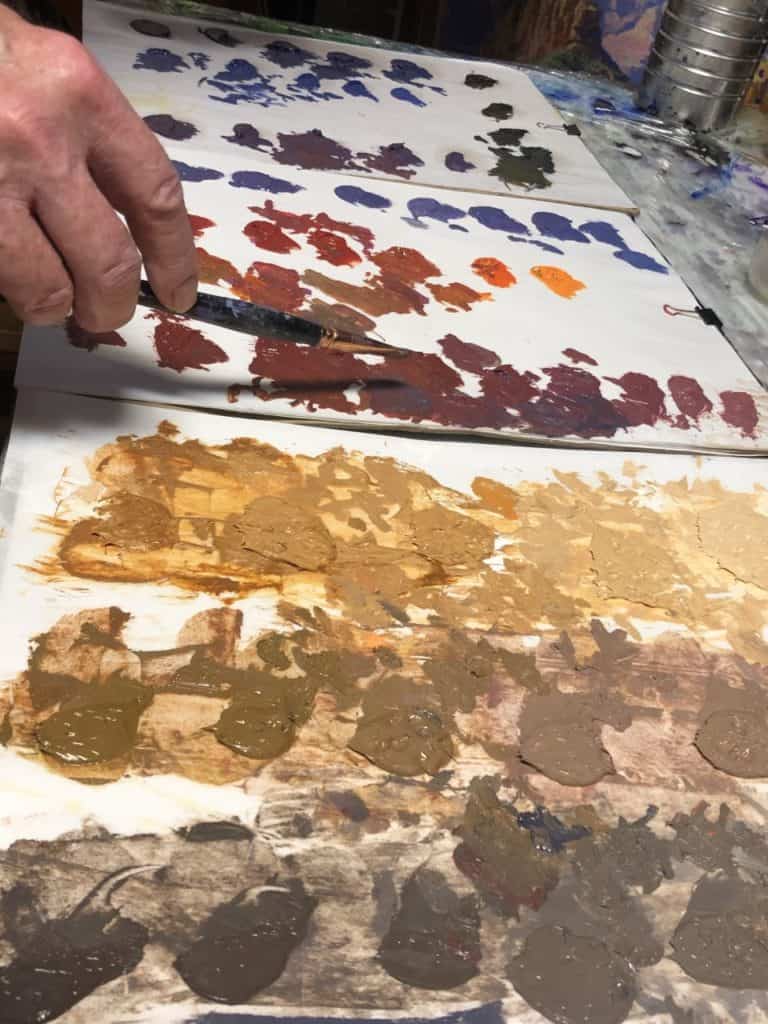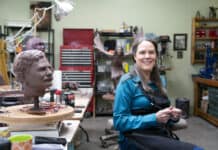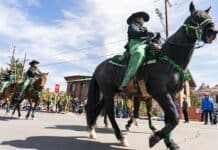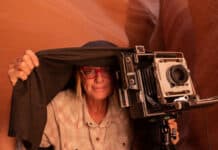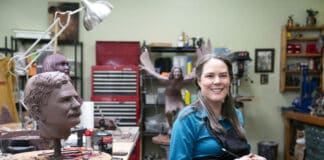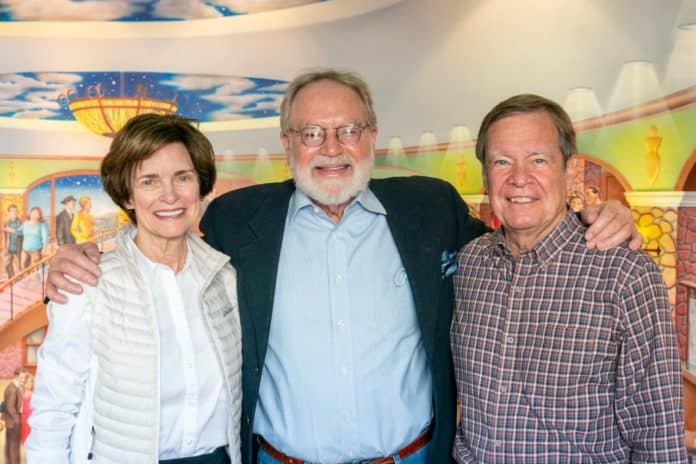
Curt Walters, a prolific Sedona painter of the Grand Canyon, says that he paints the air that surrounds his subjects and it reveals a deeper understanding of the moment and the emotions time-stamped in his works.
“In 1986 and 1987 my paintings took on a very soft and gray quality. I think I was hiding in the paint,” Walters said. “But these paintings were a deep, emotional reaction to the sadness that I felt. You could only feel the soul in these paintings if you stood in front of them long enough.”
Recently, Walters decided to speak authentically about his life — and to talk about all of it. In 2019, he and his daughter Miranda created a film, “Painting the Air: The Life and Art of Curt Walters.”
The film screened at the Sedona International Film Festival that year and again last week, at a private showing to a prestigious group of people associated with one of the top echelons of the art world — the Prix de West.
It was a nerve-wracking decision, Walters said.
Few can understand the pain and suffering of an artist’s emotional well-being, especially when painting something as beautiful as the Grand Canyon. As deep as the crevices of the seventh wonder of the world are, they can serve as a metaphor to the bottled-up deep emotions. At times Walters said he felt that being on the edge of a precipice correlated with his life’s struggles — yet it is from that cliff that he paints the most beautiful images that have resonated within his heart for the last 52 years.
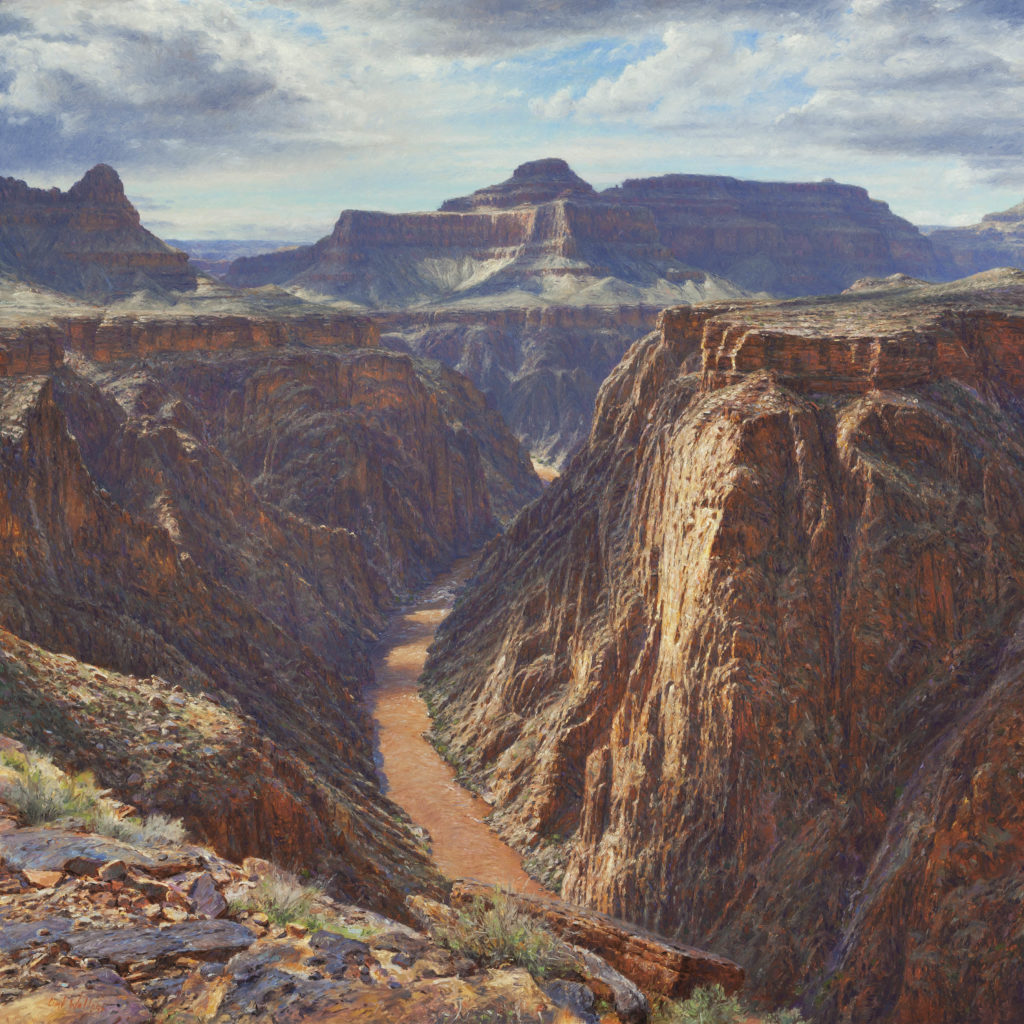
Childhood Struggles
When he said he was “hiding in the paint,” Walters was referring to demons that he had carefully concealed throughout his childhood and for most of his life.
As a child, he learned he was dyslexic, knew he was gay and later in life, struggled with alcoholism. Throughout, he attempted to hide his emotions and began to experience severe depression.
“I have few fond memories of growing up in Farmington, New Mexico,” he said, “I was punished, belittled and humiliated for not having a brain like everyone else. I never understood what I did to my classmates to be bullied and treated this way.
“My form of dyslexia affected my coordination, so I had no athletic abilities. All of the unkind remarks and nasty attitudes cost me to develop feelings of self-loathing. I always felt unwanted, unattractive and overweight.
“My father was embarrassed by his very effeminate son and moved his family to a farm” in LaPlata, N.M. in 1958, he said. “Although misguided, but with good intentions, my father wanted to make a man of me.”
While Walters’ father thought life on the farm would turn his son into a man, Walters instead turned to painting for solace.
“My father was not an affectionate man and it seemed that he was always angry,” he said. “It was clear to me that I never made him proud. But during my youth, I was able to find a connection with him through his love of the Southwest — these few happy moments meant a great deal to me — it was the only way I was truly able to bond with him.
“My last conversation with my father before he died was not about his own cancer, it wasn’t about our family, but it was about my artwork of the Southwest — this was the closest thing to his approval that I was ever going to get.”
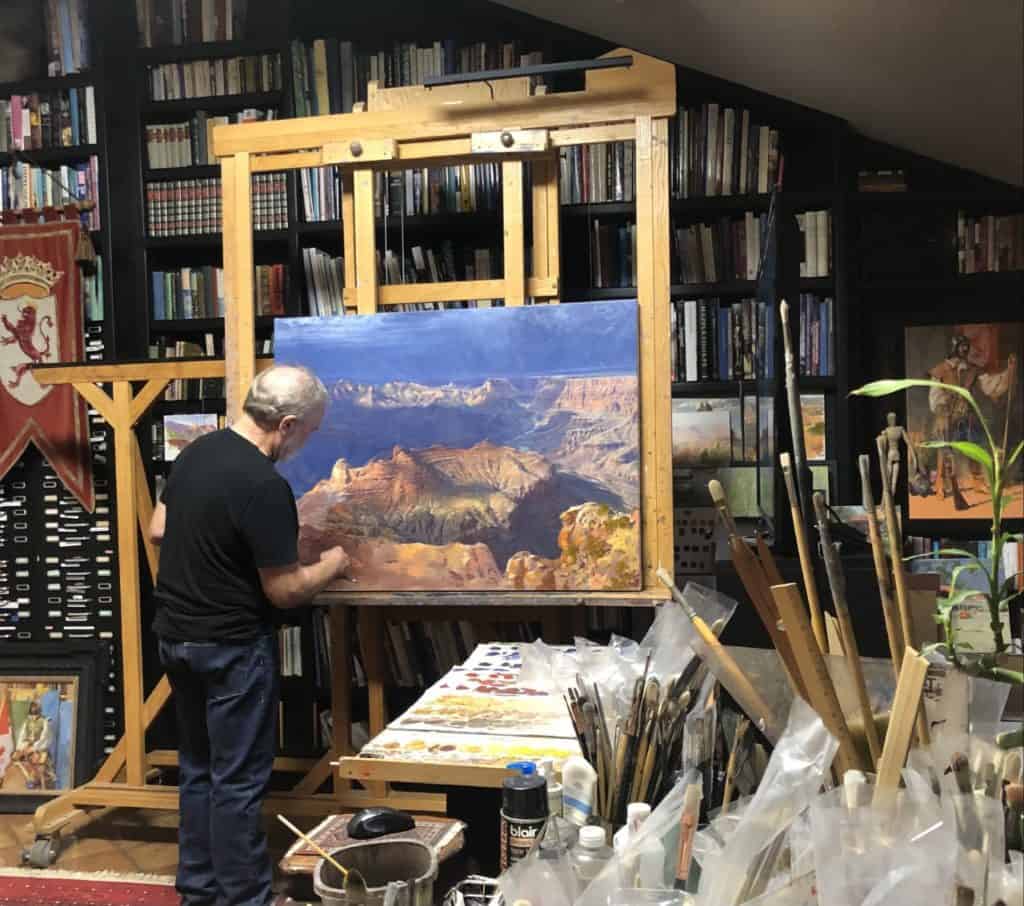
Tough Decisions
Walters said that he felt forced to hide his natural instincts growing up in a very conservative Mormon community. In college, he tried to play by the rules, which he felt society demanded of him. Shortly after the birth of his daughter Miranda in 1975, he moved his family to Taos, N.M., and felt it was one of his better decisions.
“In Taos, I met artists and men just like myself,” Walters said. “In the culture of Taos, no one treated me as if I was stupid and no one looked at me as if I was broken. It was the first time I had been accepted. I was very fortunate to be close to so many of the great artists who lived there at the time.”
In 1978, Walters’ youngest daughter, Veronica, was born.
“I very much enjoyed being a father. I loved my girls very much,” he said. “I had hoped the children would bring happiness to our home, but I still found myself unhappy being married. I wanted to be close to the Grand Canyon and close to the galleries in Scottsdale and Sedona. Mistakenly, I believed that if I moved to Sedona, I could save a failing relationship.”
The death of his father in 1980 and a divorce a few years later set off a range of emotions that he truly did not understand.
“In 1983, I was depressed and started to drink way too much,” he said. “In my art, I was exploring a very controlled and pointillism technique. These paintings were compositions that certainly reflected the uptight emotions that I was feeling at the time. The time had come to face the saddest and difficult decisions of my life.”
In 1983, Walters met Tom Dailey, a Sedona businessman who brought happiness back into his life. They have been partners for the past 38 years.
“I was very fortunate to have met Tom. He has a great sense of humor, all wrapped in Southern charm,” Walters said. He was my hero then and he continues to be my hero now.”
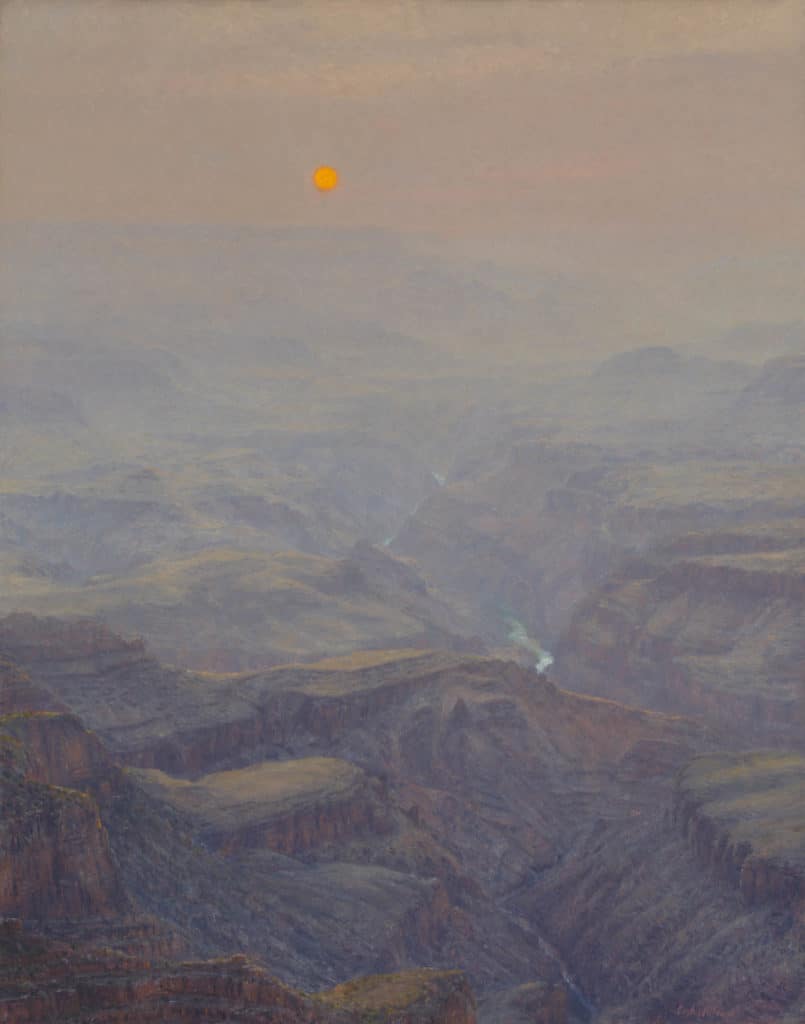
Mentor Wilson Hurley
Having the need to explore the academic side of painting, Walters said that he reached out to one of the greatest living landscape painters of the day, Wilson Hurley, and asked to have his paintings critiqued by his mentor.
“Hurley waved his hand in front of the hillside [in Walters’ painting] and said ‘Dammit Curt, this hillside is round’” Walters said. “Instantly, I got it. I understood form. This was the greatest gift of knowledge that was ever given to me.”
Walters speaks highly of Hurley, who had a great deal of influence on his paintings.
“I don’t think I would be the success that I am without him, and that is the truth,” he said. “He goaded me a lot. He was a great teacher; however, when I became a competitor, he was not very gracious.”
In 2007, after winning The Buyers Choice award for “Ra’s Domain,” at the Prix de West, Hurley warned Walters that he would never win the Prix de West Purchase award because he was gay.
“It was a very sweet irony that Wilson was there to watch me claim that very prize for my painting ‘Springs Caprice,’” Walters said. “That evening was extra special because I had also won the Buyers Choice award. Wilson came up to hug me, something way out of his comfort zone. My mentor, my competitor, my antagonist, my friend passed away the following spring.”
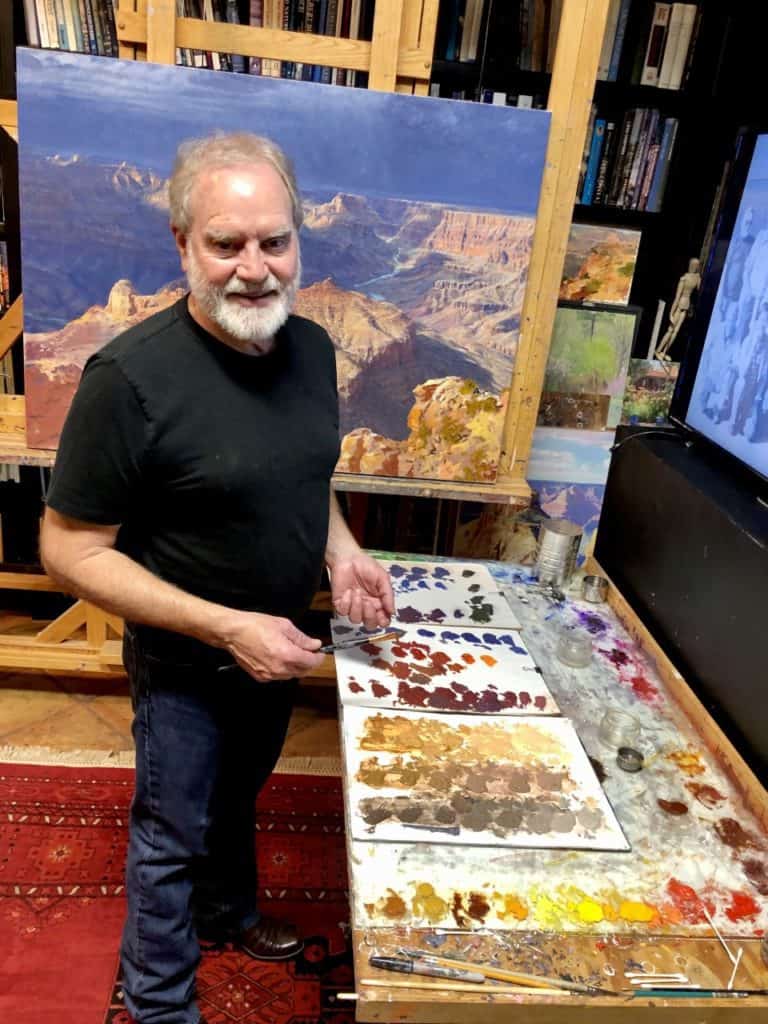
Prix de West Visits Sedona
The Prix de West Invitational Art Exhibition and Sale is in keeping with the National Cowboy & Western Heritage Museum’s exhibition of outstanding contemporary Western art. It’s one of the most highly coveted awards for any artist.
A group of 40 members of the Prix de West was in Northern Arizona last week, touring Walters’ Sedona studio and watching him paint at the Grand Canyon. It was part of their yearly art tour around the Southwest starting in Tucson, with stops in Phoenix and culminating in Sedona.
Many traveled from Oklahoma City, the home of the National Cowboy and Western Heritage Museum and Prix de West. Most were collectors of Walters’ paintings.
As part of the tour, members watched Walters’ film at the Mary D. Fisher Theatre. The audience expected to view the beautiful work of a man they all had come to admire and were quite surprised by a few of the revelations of this great artist.
“Our whole group makes an annual trip once a year, to see artists who show at the Prix de West, and Arizona is a prime place to visit artists,” said Larry Nichols, director of the National Cowboy and Western Heritage Museum and a past chairman of the board of the Prix de West. “I didn’t know how difficult his early life was and the challenges he faced.
“When you think of Curt Walters, you immediately think of his artwork and not the difficult, challenging journey he had in his early life — and especially being the great artist he is now.”
Walters fielded questions from the crowd regarding places he would like to paint, hazards of painting at the Grand Canyon, how long it takes to paint one of his works and another asking if he plans to retire.
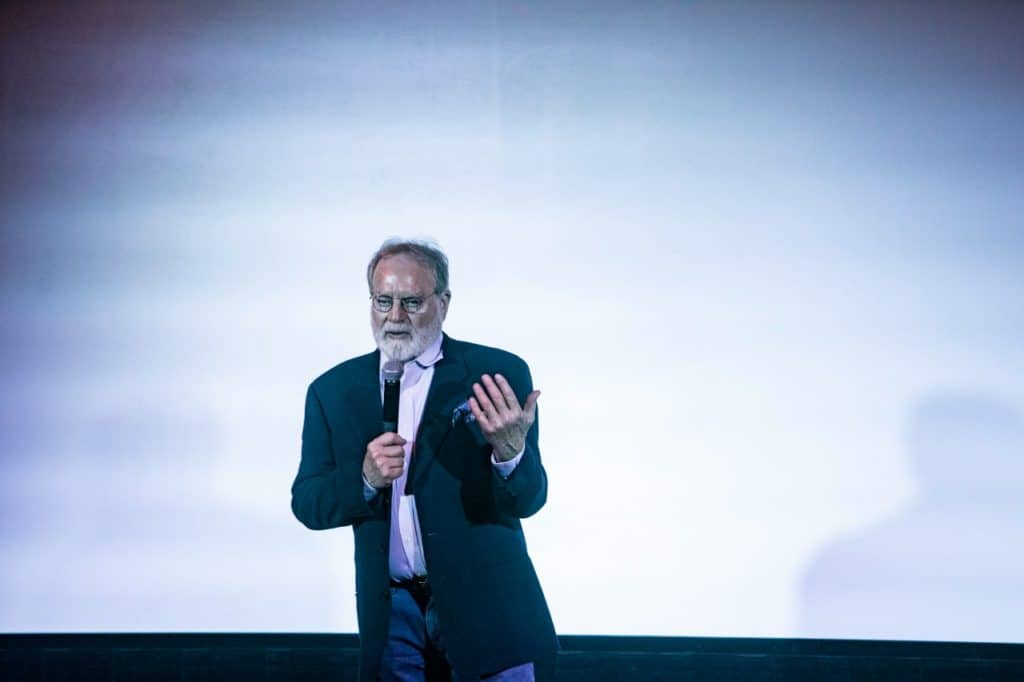
“No, I am not going to retire,” Walters said. “My production has gone down to a few paintings a year. It just doesn’t come out of me as fast as I used to paint. In the ’90s I did 100 paintings in a year and last year I did five. I’m still up and running — I’m like an old car.”
Walters has made history at the annual Prix de West. He won the Jackie L. Coles Buyers’ Choice Award at the 2019 Prix de West and previously had won the Buyers’ Choice Award a record seven times. He also won the Frederic Remington Award back-to-back in 2004, 2005 and 2013. Walters earned a double win in 2007 for the Buyers Choice Award and the Prix de West Purchase Award — the only time in the history of the show that an artist has won two awards for different paintings in the same show.
“I have won 13 awards at the Prix de West — I am just incredibly fortunate,” Walters said.
In 2022, the Prix de West will be celebrating its 50th year. Walters said that he will be submitting a painting but is not sure yet what that will be. In the meantime, the Prix de West has asked to screen his film during its event on June 17 and 18, 2022, as well as showing it at the National Cowboy and Western Heritage Museum on an ongoing basis.
For Walters, at age 71, he can now breathe a sigh of relief. He finally let go of the emotional shackles that held him a prisoner all these years and expresses his freedom through his life’s work.
“I know every brush stroke and every canvas I paint is the direct result of the truth that I capture in my work. These are my own unique personal experiences — my paintings are the narrative of my time.”
